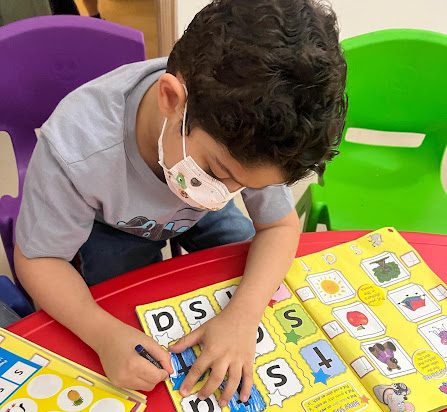At North American Educational Services (NAES) in Bahrain, we are dedicated to providing effective and engaging language education to our students. Today, we want to explore an essential topic in literacy education: the use of synthetic phonics as a superior method for learning to read compared to traditional whole word memorization.
Understanding Synthetic Phonics
Synthetic phonics is a systematic approach to reading instruction that focuses on the relationship between sounds (phonemes) and letters (graphemes). Instead of memorizing whole words, students learn to decode words by blending sounds together. For example, a child would learn to recognize the individual sounds in the word “cat” (/k/, /æ/, /t/) and then blend those sounds to read the word.
Why Choose Synthetic Phonics?
- Building Strong Foundations
Synthetic phonics provides students with the tools to tackle any new word they encounter. By understanding the basic sounds of letters and how they combine, learners can read unfamiliar words with confidence. - Promoting Independence and Confidence
Unlike whole word memorization, which can leave students feeling reliant on rote memory, synthetic phonics fosters independence. Students become empowered readers, capable of decoding words by themselves. - Enhancing Spelling Skills
With synthetic phonics, students not only learn to read but also to spell effectively. Understanding phonemic structure allows learners to break down words into their components, making spelling more intuitive. - Supporting Diverse Learners
This method is particularly beneficial for students with varying learning styles. Whether a child is a visual learner or an auditory learner, synthetic phonics offers multiple entry points to understanding language.
Implementing Synthetic Phonics at NAES
At NAES, we have integrated synthetic phonics into our curriculum to ensure our students receive the best possible literacy instruction. Here’s how we do it:
- Structured Lessons: Our phonics lessons are carefully designed to introduce sounds progressively, ensuring that every student builds on their knowledge step-by-step.
- Interactive Activities: We incorporate games, songs, and hands-on activities to make learning phonics enjoyable and engaging. This approach keeps students motivated and excited about reading.
- Regular Assessment: We conduct regular assessments to monitor each student’s progress and adjust our teaching strategies accordingly. This personalized approach helps us meet the unique needs of every learner.
Success Stories
We have seen remarkable success stories at NAES as students embrace synthetic phonics. Many have transformed from hesitant readers into enthusiastic bookworms, eager to explore new stories and information. Their newfound confidence not only enhances their reading skills but also positively impacts their overall academic performance.
Conclusion
As we continue to champion effective literacy education at NAES, we believe that synthetic phonics is a game-changer. By equipping our students with the skills to decode language, we are setting them on a path to lifelong learning and success.
If you’re interested in learning more about our programs or how synthetic phonics can benefit your child, feel free to reach out to us. Together, let’s unlock the doors to reading and literacy!
Check our courses page and become a part of the NAES community!

